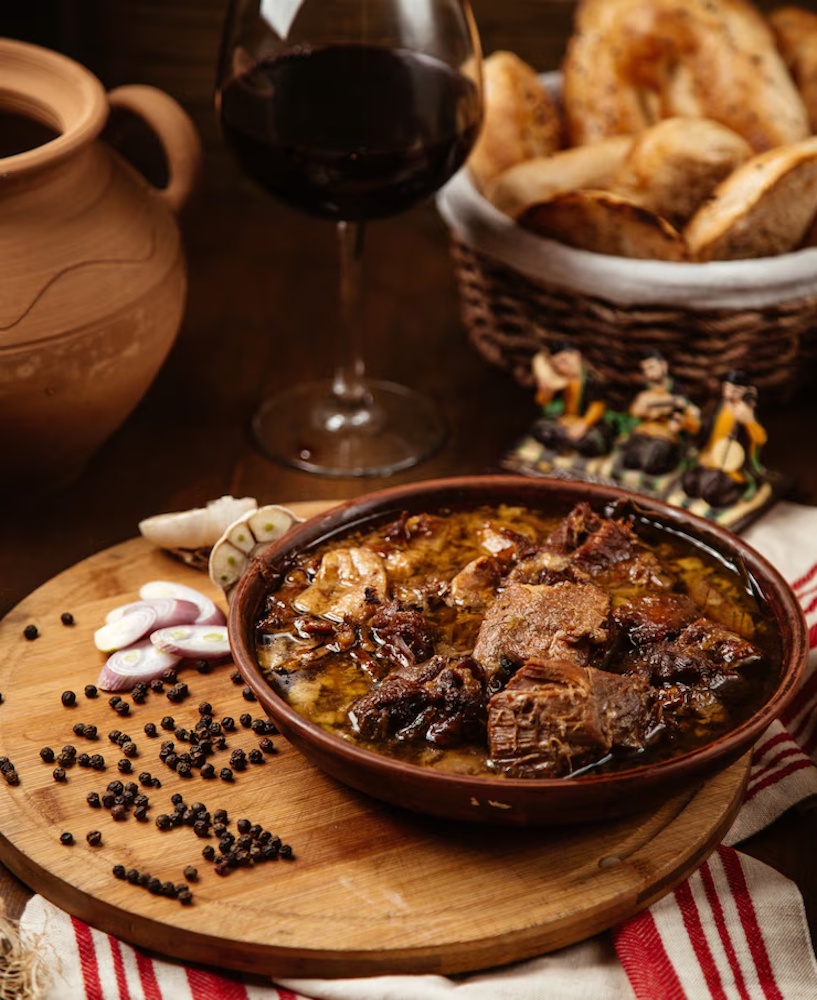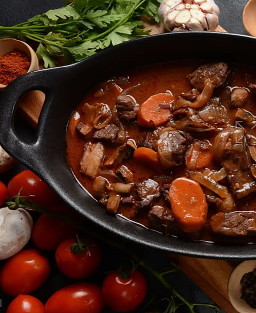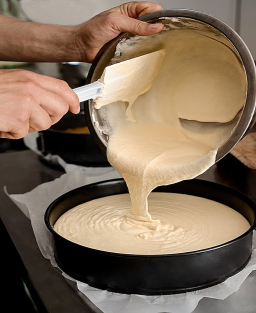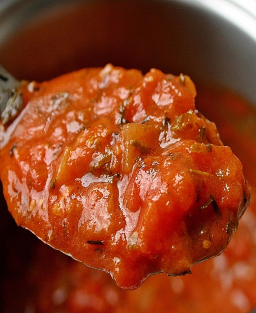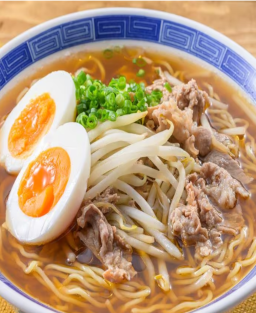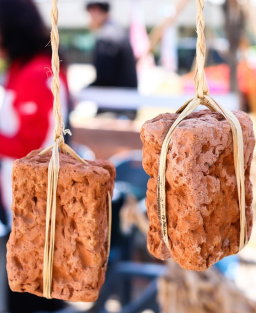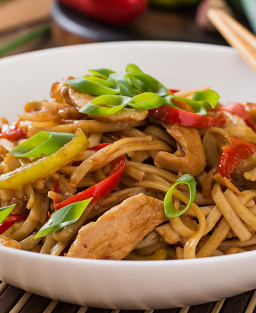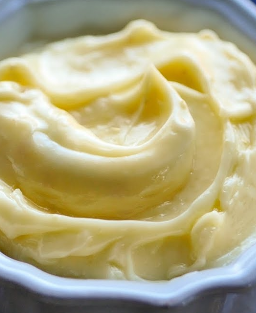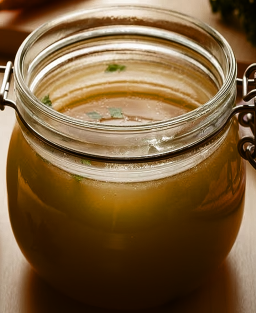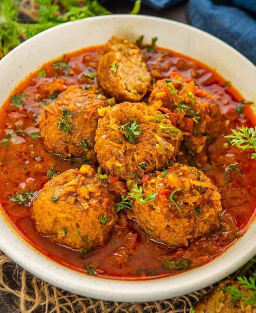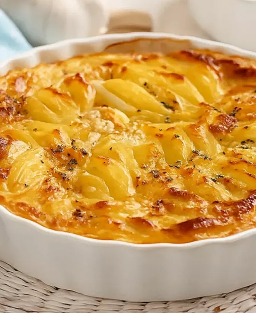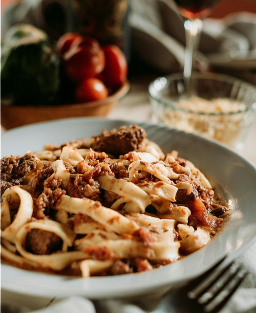- Out-of-Stock
Beef à la Bourguignonne – Exact Recipe by Auguste Escoffier (Le Guide Culinaire, 1903)
Beef à la Bourguignonne – Exact Recipe by Auguste Escoffier (Le Guide Culinaire, 1903)
The dish we now know as Bœuf Bourguignon was first mentioned in 1867 in Pierre Larousse’s Grand Dictionnaire Universel as an example of a dish prepared "à la bourguignonne"—that is, simmered in red wine. It is not a medieval Burgundian dish but rather a "Parisian wine stew" popularized in Parisian bouillons (notably Bouillon Duval from 1854) before appearing in Burgundy at the beginning of the 20th century.
This dish was codified in the late 19th and early 20th centuries by two culinary authorities:
-
Auguste Escoffier in Le Guide Culinaire (1903),
-
and Auguste Colombié in La Cuisine Bourgeoise (1906).
Beef à la Bourguignonne – Exact Recipe by Auguste Escoffier (Le Guide Culinaire, 1903)
Ingredients for 6 people
– 1.5 kg (approx. 3.3 lbs) of beef cuts suitable for long cooking, such as shin, chuck, shoulder blade, or heel (avoid cuts that are too lean like tenderloin or too rustic like beef cheek)
Escoffier’s preferred cuts:
For a stew simmered for hours in red wine, Escoffier favors cuts rich in collagen and suitable for slow cooking, which become meltingly tender without falling apart. The best choices include shin (firm and gelatinous), chuck (balanced and tender), shoulder blade (classic and soft), and heel (less fatty but flavorful). Oxtail may be added to enrich the sauce. Beef cheek, although appreciated today, was considered too rustic and was rarely used in the bourgeois cuisine of Escoffier’s time.
– 150 to 200 g (5 to 7 oz) of salted pork belly, unsmoked
– 1 yellow onion or white onion
– 1 carrot
– 1 tablespoon of flour
– 75 cl (about 3 cups) of red Burgundy wine
Wine selection according to Escoffier:
Escoffier recommends a dry, good-quality red Burgundy wine, to be used both for cooking and to perfume the dish. The wine must be full-bodied enough to withstand long simmering and contribute depth to the sauce. Traditionally, a simple but expressive Pinot Noir was used. Avoid very old or expensive wine, as the cooking process will transform and concentrate its aromas.
– 1 bouquet garni (1 sprig of fresh or dried thyme, 1 bay leaf, a few sprigs of parsley—whole leaves or stems as preferred)
– Cooking fat (preferably lard)
– Salt, pepper
Preparing the lardons
Cut the unsmoked salted pork belly into small strips (lardons).
Place them in cold water, bring to a boil, and simmer for 5 to 10 minutes.
Drain and pat dry. This blanching removes excess salt and softens the flavor.
Then brown the lardons in a bit of fat (lard or cooking fat) until lightly colored. Set aside.
Preparing the beef
In the same pot, add more fat if needed. Brown the chosen beef pieces on all sides until nicely colored. Do this in batches to avoid overcrowding. Set aside.
Aromatic base cooking
In the remaining fat, gently sauté the sliced onion and carrot. Return the meat and lardons to the pot. Sprinkle with flour and mix well to coat all ingredients.
Deglazing and slow cooking
Pour in the red wine just enough to cover the meat. Add the bouquet garni. Lightly salt (be cautious with the salt from the lardons) and pepper to taste. Bring to a gentle simmer.
Cover and cook very slowly for 2.5 to 3 hours, or in a low oven (around 150 °C / 300 °F), until the meat is meltingly tender.
Finishing and serving
Remove the bouquet garni. Adjust seasoning. Serve very hot with steamed potatoes, fresh pasta, or country bread. Like many saucy dishes, it is best prepared a day ahead and reheated gently.
Historical Notes
– Butter is not used in this recipe. Escoffier recommends stable fats such as lard.
– Smoked bacon was not used; only unsmoked, salted pork belly (blanched) was considered proper in classical or bourgeois cuisine.
– No tomatoes, no tomato paste, no mushrooms, and no pearl onions appear in the original version.
Ancient Origins of Beef à la Bourguignonne – A Historical Lineage
1. Roman Era (1st century BCE – 4th century CE)
Romans mastered slow-cooking techniques in liquids. Wine was commonly used, sometimes boiled or mixed with honey, to tenderize meat and add aroma. In Apicius’ De re coquinaria, there are recipes for stews of pork or game cooked in wine, with spices, garum (fermented fish sauce), and dried fruits.
Although beef was rarely eaten (seen as tough and utilitarian), some tougher cuts were boiled or stewed, especially in rural or military kitchens. The idea of a wine-based long stew was already present, though with very different flavors (use of exotic spices, herbs, and sweet-and-sour profiles).
2. Early Middle Ages (5th – 11th century)
Written sources are scarce, but cooking practices continued Roman methods. Meats were simmered slowly in cauldrons or pots. Wine, still expensive, was mostly used in religious or noble kitchens.
Vinegar, beer, or sour broths were often substitutes. Meat was boiled with herbs, roots, sometimes leeks or garlic. These methods were technical ancestors of beef simmered in a seasoned, acidic broth.
3. Late Middle Ages and Renaissance (12th – 16th century)
The first cookbooks appear. Recipes for “boiled meats,” “broths,” and “beef stews with wine or verjuice” are documented. These rustic dishes sought to tenderize tough meats by slow cooking in liquids.
Some medieval recipes include wine, spices, pork fat, and vegetables. The core idea of a “bourguignon” (meat + wine + aromatics) is already there, though the final form and flavor are still far off. Medieval cuisine often favored tangy or even sweet-and-sour combinations.
4. 17th – 18th century
Techniques become more refined. Red wine becomes a common cooking ingredient in bourgeois households. Cuts for braising are carefully selected. The use of bouquet garni, lardons, carrots, and onions in stews becomes standard.
The term “à la bourguignonne” begins to refer to a cooking style: simmering meat (often beef or rooster) in red wine with lard, onions, and herbs. It still does not denote a single specific dish, but rather a regional preparation method.
5. 19th century – Emergence of the name and codification
It is in the 19th century that we see the dish explicitly called “beef à la bourguignonne.” It becomes popular in Parisian bouillons, especially at Bouillon Duval around the 1850s, before entering bourgeois gastronomy.
Auguste Escoffier codifies a clean, classical version in his Guide Culinaire (1903), without mushrooms, butter, or tomato. Auguste Colombié, in La Cuisine Bourgeoise (1906), offers a more rustic variant closer to regional traditions: varied cuts, richer garnishes (pearl onions, mushrooms), and enriched sauce.
Conclusion
Beef à la Bourguignonne is not the descendant of a single dish, but the result of a long evolution:
-
from ancient Roman wine-based cooking techniques,
-
to medieval peasant stews,
-
to bourgeois refinements of the 17th–18th centuries,
-
culminating in its modern codification around the turn of the 20th century.
It represents the culmination of a two-thousand-year-old culinary tradition, rooted in rural France and elevated by bourgeois craftsmanship.











